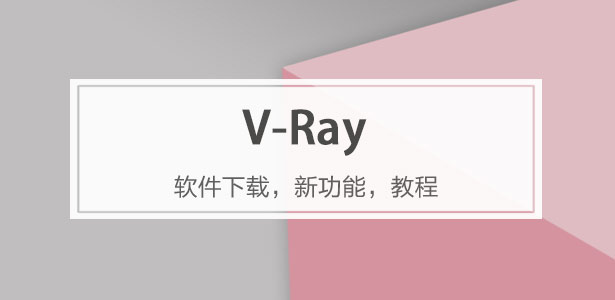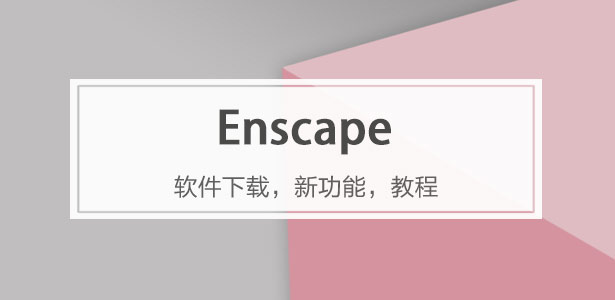
下載app免費領取會員






項目名稱? 城/村計劃——深圳涼帽村改造
總建筑師、城市與建筑設計? 南沙原創建筑設計工作室
集群設計? 南沙原創建筑設計工作室、一樹建筑、薛峰工作室
平面標識? 爍設計
項目地點? 廣東深圳
建成時間 2024.5
用地面積? 30000平方米
本文文字由南沙原創提供。
城市 · 鄉村新界面
自然 · 人工新鏈接
記憶 · 當下新文化
基礎 · 設施新日常
地方性重構
涼帽空間再生產
01
設計背景:
城/村計劃——龍崗六村實踐展
Background:
Urban Village Projects – Longgang Urban Village Initiative
“城/村計劃——龍崗六村實踐展”于2021年正式啟動,由周紅玫擔任總策劃,孟巖擔任總策展。南沙原創很榮幸地加入了此次”城/村計劃”設計大團隊,作為六村之一的涼帽村聯合策展人和總體設計統籌,主持了涼帽村改造設計及實施的全過程。
The Urban Village Projects – Longgang Urban Village Initiative, curated by Chief Planner Zhou Hongmei and led by Chief Curator Meng Yan, was officially launched in 2021. NODE Architecture & Urbanism (NODE) is privileged to participate in this initiative as part of the multidisciplinary design team. As the co-curator and lead design coordinator for the Liangmao Village, one of the six designated villages, NODE takes charge of the whole process of its renovation and implementation.

02
調研情況:
千村一面:深圳城中村
Site Research:
A Thousand Villages with One Face: The Homogenization of Shenzhen’s Urban Villages
眾所周知,快速城市化的進程抹去了很多獨特的地方記憶和歷史空間,在短時間內,這種趨勢造就了中國城市“千城一面”的普遍風貌。作為速生城市的典型代表,深圳在飛速發展的過程中,城中村作為城市發展中不可或缺的一部分,同樣未能幸免。原本豐富多元的身份與特色在快速的統一化和標準化規劃中逐漸被消解,最終形成了今日的“千村一面”。
It is widely acknowledged that rapid urbanization has erased many distinctive local memories and historical spaces. In a short span, this trend has led to the homogenization of China’s urban landscape, where cities increasingly resemble one another. As an archetype of rapid urban expansion, Shenzhen has undergone an accelerated transformation, and its urban villages, integral to the city's development, have not been spared. Once rich in diverse identities and characteristics, these villages have been gradually diminished through standardized and uniform planning, culminating in today's phenomenon of “a thousand villages with one face.”
涼帽村雖僅占地3.15公頃,卻是快速城市化洪流里極具代表性的一個村落:由“靠山吃山”的小農經濟型村落,在1990年代轉型為服務周邊工廠的住房配套,新村建設削平山地、以10×10米為單位進行標準化宅基地規劃和快速實施,徹底改變了原有的地貌和生活方式。
Despite its modest expanse of 3.15 hectares, Liangmao Village epitomizes this torrent of rapid urbanization. Originally a small agrarian settlement sustained by its surrounding natural resources, it transitioned in the 1990s into a housing development supporting nearby factories. The construction of the new village development leveled the mountainous terrain, adopting a standardized 10×10-meter grid for homestead planning and rapid implementation, irrevocably altering both the physical landscape and the traditional way of life.


這一系列標準化的建設模式,最終讓涼帽村完全融入了中國城市化的快速發展進程中,被周邊工業廠房所包圍,失去了原有的獨特性,成為典型的“千村一面”城中村的一員。
This standardized development model ultimately assimilated Liangmao Village into the accelerated trajectory of China’s rapid urbanization. Encircled by industrial complexes, the village lost its original distinctiveness, becoming one of the countless homogenized urban villages.



03
設計策略:
從“千村一面”到“一村千面”
Strategy:
From “A Thousand Villages with One Face” to “One Village with A Thousand Faces”
隨著對涼帽村及其周邊地區的田野調查和溯源研究的深入,針對普遍存在“千面一村”的單一化社區面貌以及公共設施的缺失和割裂問題,結合涼帽村的高臺地形特點,我們在有限的用地條件下,嘗試通過點線面的城市設計梳理,以公共空間為主線,提升日常基礎設施的復合性功能,建構一個適應不同年齡段人群需求的多元化新村空間體驗,期望最終推動涼帽村形成“一村千面”的公共生活新局面。
Through extensive field research and historical tracing of Liangmao Village and its surroundings, we addressed the pervasive monotony of community aesthetics, alongside the absence and fragmentation of public amenities. In view of the village’s elevated terrain and constrained land resources, our approach integrated urban design strategies through a framework of points, lines, and planes. Centering on public spaces as the connective thread, the design enhances the multifaceted functionality of everyday infrastructure and crafts a diverse spatial experience that caters to all age groups, ultimately catalyzing a transformative public life for Liangmao Village, “one village with a thousand faces.”
城市設計
Urban Design
經過數次場地踏勘、調研及與當地村民的深入溝通,南沙原創梳理并設計了“兩個基礎設施組團+T字形街道組團”的空間格局:
Following multiple site visits and in-depth dialogues with local residents, NODE developed a spatial framework comprising “two infrastructure clusters + a T-shaped street cluster”:
1、T字形街道組團
T-Shaped Street Cluster
T字形街道強化了對涼帽的路徑體驗的感知,以街道連接兩個基礎設計組團和若干街心花園空間,將不同標高的場地串聯起來。T字形街道從橫向、縱向不同維度將場地很好地進行連接。城市—社區—自然的公共空間相結合,旨在挖掘涼帽村現有公共景觀空間的潛力,力圖以較小的提升改造介入創造出更優質、更充足的公共空間場所。
The T-shaped street configuration enhances the spatial experience of Liangmao Village’s pathways, interlinking the two infrastructure clusters with a series of pocket parks and sites of different elevations. The street effectively integrates the site both horizontally and vertically through its cross-dimensional layout. By combining urban, community, and natural public spaces, this approach aims to unlock the latent potential of the existing public landscape with minimal yet effective interventions, creating a more accessible network of communal spaces of higher quality.
2、兩個基礎設施組團
Two Infrastructure Clusters
村址公園與社區樂園這兩個基礎設施組團順應現狀地形和自然條件,縫合不同時期的發展痕跡在物理空間上造成涼帽村各方面的“割裂”,建立起快慢交互、公私交互、新舊交互、城市與自然交互多元體驗,提升村落公共生活的活力。
The two infrastructure clusters, Heritage Park and Community Park, harmonize with the existing topography and natural conditions. By stitching together the physical fragmentation inflicted upon Liangmao Village by disparate development phases, these clusters nurture manifold interactive experiences — fast and slow, public and private, old and new, urban and natural — revitalizing the village’s public life.



在此基礎上,我們相信要實現“一村千面”的多元公共生活,設計團隊的差異化合作是關鍵。為此,我們邀請陳曦的一樹建筑及藝術家薛峰共同參與改造,以“建筑+景觀+立面藝術”的跨界合作,結合涼帽村現狀物理空間特征,因地制宜地發揮各自的創作風格。從不同的思考角度切入,共同創造出多元豐富的空間,為涼帽村注入更具特色和層次感的公共體驗。
On this basis, we believe that achieving a diversified public life of “one village with a thousand faces” hinges on the differentiated collaboration of the design team. To this end, we invited ATELIER XI, led by Chen Xi, and artist Xue Feng to partake in the renovation efforts. This interdisciplinary collaboration of “architecture + landscape + facade art” leverages the unique physical characteristics of Liangmao Village, allowing each contributor to harness their distinct creative vision. By engaging with the site from different perspectives, we set out to craft a richly textured spatial experience that imbues Liangmao Village with renewed character and layered vibrancy.
04
村址公園:
重拾涼帽記憶,再現老村格局
——
建筑、景觀和基礎設施(南沙原創)
Heritage Park | Reclaiming Liangmao’s Memory, Reinterpreting the Old Village Layout
Architecture, Landscape and Infrastructure (NODE)
涼帽老村坐落于涼帽山腳,在城市規劃法定圖則中為道路與交通設施用地。因城市道路的建設,老村大部分村民搬遷至他處,仍有幾戶人家堅守于此。這一情況迫使城市主干道甘李路調整規劃路徑。老村與位于削平臺地上的新村存在12米的高差,且長期處于雜草叢生的狀態,不僅于新村缺乏聯系,也與周邊城市脫節。我們的設計旨在重建多重關系:新與舊,快與慢,虛與實,高臺與地臺,從時間與空間兩個維度出發,探索老村融合與再生的可能性:
Nestled at the foot of Liangmao Hill, the old Liangmao Village lies within an area designated for roads, streets and transportation facilities in the urban statutory plans. The construction of a new city road prompted most villagers to relocate, though a handful of households remain steadfast, necessitating the adjustment to the planned route of Ganli Road, a major urban arterial road. A 12-meter height difference separates the old village from the newly constructed settlement on the leveled plateau, leaving the former long overgrown over time, and disconnecting the old village from both the new and the broader urban fabric. Our design seeks to reconstruct these segmented relationships — past and present, fast and slow, solid and void, and elevated and grounded. Through the dual dimensions of time and space, we explore the possibilities of integration and regeneration for the old village.

設計策略:肌理與記憶重塑
Design Strategies: Reconstructing Fabric and Memory
設計從涼帽老村的村址肌理入手,肌理翻轉,形成新的虛實空間關系。 設計通過高度的疊加,在新村和老村之間形成新的連接體,將歷史記憶融入當下日常生活。
The design begins with an interpretation of the old Liangmao Village’s spatial fabric, inverting its figure-ground relationship to establish a new interplay of solid and void spaces. By layering spatial elements in a stacked manner, the intervention creates a new connector between the old and new villages, weaving historical memory into contemporary daily life.



村址公園的首層,以景觀庭院的方式還原老村建筑肌理,肌理之間的空間為步行連廊和灰空間;二層新建鋼結構連廊,將老村、新村與涼帽山自然步道貫通,增強區域整體性與可達性。
The ground level of Heritage Park reinstates the spatial fabric of the old village through a landscaped courtyard, where the interstitial spaces define pedestrian corridors and semi-open gray spaces. Above, a newly constructed steel walkway connects the old village, the new village, and the natural trails of Liangmao Hill, improving overall spatial cohesion and accessibility across the area.


由于法定圖則的影響,村址公園主要采用輕質鋼格構的形式進行搭建。這種格網狀單元“天地墻”一體化鋼結構,統一整個公園的建構形式語言,原來的實體墻體,呈現“虛”的存在;同時設計結合園林窗洞形式,營造出多樣化的墻體組合模式。原老村的建筑轉化為廢墟花園,成為村民和市民日常休憩閑談、孩子們戲玩的場所。
Given regulatory constraints, Heritage Park is primarily constructed using a lightweight steel lattice structure. This integrated floor-wall-ceiling structural system unifies the architectural language of the park, transforming the once solid walls into permeable "void" presences; meanwhile, inspired by traditional Chinese garden windows, the design introduces a variety of wall compositions. In this way, the remnants of the old village are repurposed into a ruin garden, offering a communal space for villagers and city dwellers alike — a place for leisurely rest, conversation, and children’s play.









設計力求體現差異并存的張力,既連接新老涼帽村,又重塑歷史記憶;既保留原老村居民社區生活功能,又注入現代公共性。
The design strives to embody a dynamic tension where contrasts coexist, bridging the old and new Liangmao Village while reinterpreting historical memory; it preserves the communal functions essential to former residents while simultaneously infusing modern public vitality.



通過這些設計手法,涼帽老村不再是一個被遺忘的邊緣地帶,而是成為一個具有地方文化特色、家園場所記憶和充滿活力的公共生活場所。
Through these design interventions, the old Liangmao Village is no longer a marginalized fringe but has been rejuvenated into a dynamic public place enriched with local cultural identity, a sense of homeland memory, and a lively communal life.






05
社區樂園:
社區活動與自然山林相應
——
建筑、景觀和基礎設施(南沙原創)
Community Park | Community Activities Echo with Natural Woodlands
Architecture, Landscape and Infrastructure (NODE)
原有的社區公園位于新村末端,與山體交界的一片狹小臺地上。公園設施僅有一處籃球場和零星布置的健身器材,空間狹促且功能單一,遠不能滿足不同年齡段居民的活動需求。
The original Community Park was situated at the edge of the new village on a narrow terrace abutting the hill. With only a single basketball court and a sparse scattering of fitness equipment, its confined space and monotonous functionality fell far short of accommodating the assorted needs of residents across different age groups.
為此,我們提出功能復合化與空間高效利用的改造方案,通過垂直空間的設計,實現多功能疊加與場地價值的提升。
In response, we proposed a renovation scheme emphasizing versatility and spatial efficiency, superimposing multiple functions by utilizing vertical spaces and thus boosting the site's overall value.




首層設計為開放式劇場,通過大跨度的偏心半圓形結構使得劇場中間無結構柱,提供多樣化的社區文化活動場所。
The ground level is conceived as an open-air amphitheater, featuring a large-span eccentric semi-circular structure devoid of structural columns in the stage area, thereby creating a flexible space for a variety of community cultural activities.

籃球場為抬升至二層空間,結構設計需要確保其受力均衡,并能與首層大跨度劇場形成有機疊合。
The basketball court is lifted to the second level, requiring a specific structure that ensures balanced load distribution while integrating with the large-span theater below.



同時,場地內有樹柱需要保留的喬木,在結構設計中因地制宜地根據喬木樹冠所在位置掏空結構板以融入自然環境。這一垂直空間的設計不僅是功能復合設計,也是結構與建筑空間的相當益彰,克服了場地面積有限及功能疊加帶來的技術挑戰。
Additionally, in response to the presence of mature trees requiring preservation within the site, the structural design is adapted to accommodate the canopy by strategically hollowing out the slab where necessary, blending the built form with its natural environment. This vertical spatial strategy not only achieves functional integration but also celebrates an interdependent relationship between structure and architectural space, addressing technical challenges posed by limited land and layered functionality.


社區樂園亦是一個兒童友好型場所,設計根據兒童的生理與心理特征設置互動性強、富有空間創造力的游樂設施,并與山體自然環境及新建的運動復合設施產生良好的互動,實現物盡其用,讓兒童能夠與自然互動,提升場地趣味性。
The Community Park is also envisioned as a child-friendly place, incorporating interactive and spatially stimulating play facilities tailored to children's physiological and psychological needs. These elements establish a dynamic interplay between the mountain’s natural setting and the newly introduced sports amenities, maximizing spatial possibilities while cultivating an engaging atmosphere where children can interact with nature, thereby enriching the site's experiential vibrancy.


作為涼帽村中最重要的公共活動場所,通過復合功能的垂直向空間布局,社區樂園充分挖掘了有限場地的潛力,打破傳統單一功能公園的局限性,賦予場地更多活力和包容性,實現全齡段友好。
As the most vital public gathering space within Liangmao Village, the Community Park employs a vertically stratified spatial configuration to unleash the potential of its constrained footprint. By surpassing the limitations of conventional single-purpose parks, it injects greater vitality and inclusivity into the site, forging a universally accessible environment that caters to all age groups.




06
街道組團:
市井生活與當代藝術
——
集群設計(南沙原創NODE)景觀及入口裝置(ATELIER XI一樹建筑)、主街立面壁畫(薛峰工作室)、標識導視及LOGO設計(SURE Design爍設計)
Street Cluster | Vernacular Life Meets Contemporary Art
Cluster Design (NODE) | Landscape and Entrance Installations (ATELIER XI) | Main Street Fa?ade Murals (Xue Feng Studio) | Signage & Wayfinding and Logo Design (SURE Design)
正如前文所述,城市設計涵蓋了公共建筑、景觀、公共家具、建筑立面以及標識導視等多個層面。為打造“千面一村”的多元化生活方式,南沙原創通過集群的方式,營造交互多元的體驗,提升村落公共生活的活力。
As previously mentioned, urban design encompasses various aspects such as public architecture, landscape, public furniture, building facades, and signage. To create the "One Village with A Thousand Faces" approach for diversified lifestyles. NODE uses a clustered approach to create interactive and diverse experiences, enhancing the vitality of public life in the village.
涼帽村擁有逾兩百年歷史的竹編工藝傳統,這一在地手工文化曾廣泛服務于村民的日常生產與社區營造,承載著深厚的材料記憶與地域技藝。設計團隊以竹編文化為核心線索,將其貫穿于村口空間的建筑與藝術表達中,將生產方式提升到文化產業層面。
Liangmao Village has a bamboo weaving tradition that spans over 200 years. This local handicraft culture has been widely used in the daily production and community building of the villagers, carrying deep material memory and regional craftsmanship. The design team takes bamboo weaving culture as a core theme and integrates it into the architectural and artistic expressions of the village entrance, elevating the production method to a cultural industry level.
在街道更新部分,一樹建筑提升重點范圍包含臺地花園、主要街道、街心花園、等不同尺度的空間類型。沿西側臺地原有寬度僅1米左右的人行道通過采用結構懸挑的方式被拓寬為開闊的觀景平臺,將為這個原本擁擠的城中村提供了一個綠植環繞、視野開闊、適合交流及運動的“村莊陽臺”。
In terms of street updates, the focus of ATELIER XI includes various spatial types, such as terraced gardens, main streets, and central gardens at different scales. The original sidewalk along the west side of the terrace, which was only about 1 meter wide, was widened into an expansive viewing platform through the use of a cantilevered structure, providing this otherwise congested urban village with a green, open space suitable for communication and physical activities — a "village balcony."


入口處的頂棚及崗亭設計回溯了村落與竹編工藝的歷史淵源,以現代建筑語言重新演繹了竹木結構、竹條編織的本土傳統手工方式,力圖讓改造后的村口竹構與崗亭能夠發展延續本土的材料記憶,藝術家薛峰把對竹編歷史的解讀轉換在立面的壁畫創作,為已有村落平添了人文藝術的神采,使之既適應周邊環境,又能增添一種別樣的意義。
The design of the entrance canopy and kiosk traces the historical connection between the village and bamboo weaving. By reinterpreting the local traditional handcraft techniques of bamboo wood structures and bamboo weaving with modern architectural language, the design seeks to ensure that the renovated bamboo structure and kiosk at the village entrance continue to preserve the local material memory. Artist Xue Feng interprets the history of bamboo weaving through mural art on the facade, adding a humanistic and artistic touch to the existing village, making it both contextually appropriate and rich in new meaning.




爍設計基于壁畫和景觀的色彩、繪畫的統一,標識與logo結合了涼帽村的歷史背景打造出完整的一套文化符號,用于涼帽村的樓棟識別與方向指引。
SURE Design, based on the unity of mural and landscape colors, created a complete set of cultural symbols for Liangmao Village, combining the historical background with signage and logos. This set of symbols is used for building identification and directional guidance in the village.


07
后續
Looking Ahead
涼帽村的更新改造還在持續中。我們更希望未來的城中村能“軟硬兼施”,除了空間和形象的改造升級,還能引入社區運營, 通過新的產業植入將原先的生產方式提升到文化產業層面,以此助推涼帽村在真正意義上的全方位提升。
The renovation of Liangmao Village remains an ongoing endeavor. Beyond the spatial and aesthetic upgrades, we aspire for future urban villages to achieve a holistic balance between “software” and “hardware” by integrating community-driven management. By introducing new industries to elevate traditional production into the cultural industry sector, we endeavor to propel Liangmao Village toward a comprehensive and sustainable upgrade.

設計圖紙 ▽















完整項目信息
項目名稱:城/村計劃——涼帽村改造
項目類型:城市設計、更新改造
項目地點:中國深圳市龍崗區涼帽村
建成狀態:建成
設計時間:2021.3—2021.8(城市設計)、2021.8—2022.10(建筑及景觀設計)
建設時間:2021.10—2024.5
用地面積:30000平方米
建筑面積:
村址公園面積:3500平方米
社區公園面積:2100平方米
街道總長:980米
立面改造:12棟建筑
設計團隊完整名單:
總建筑師:南沙原創建筑設計工作室
城市設計與建筑設計團隊:
南沙原創建筑設計工作室:劉珩(主創),吳義娟,黃杰斌,王恒鋼,羅意鑫,黃國良,程犁天,謝銳生(實習),林晨(實習)
集群設計團隊:
村址公園與社區公園等:南沙原創建筑設計工作室
入口及T字街區:一樹建筑
T字街區立面壁畫:薛峰工作室
平面標識:爍設計
結構設計顧問:和作結構建筑研究所
施工圖設計單位:北京中外建建筑設計有限公司
景觀施工圖設計:深圳市麓景園林景觀設計有限公司
“城/村計劃”總策展:周紅玫,孟巖
委托方:深圳市龍崗區政府
代建單位:深圳華僑城房地產有限公司
版權聲明:本文由南沙原創建筑設計工作室授權發布。歡迎轉發,禁止以有方編輯版本轉載。
投稿郵箱:media@archiposition.com
本文版權歸腿腿教學網及原創作者所有,未經授權,謝絕轉載。

下一篇:BIM建筑|長沙奧體中心,實施方案多圖首公開 / 哈工大設計院+湖南設計






推薦專題




































